Denise Ferreira da Silva & Arjuna Neuman
Ancestral Clouds Ancestral Claims
05 Oct 2023 - 17 Mar 2024
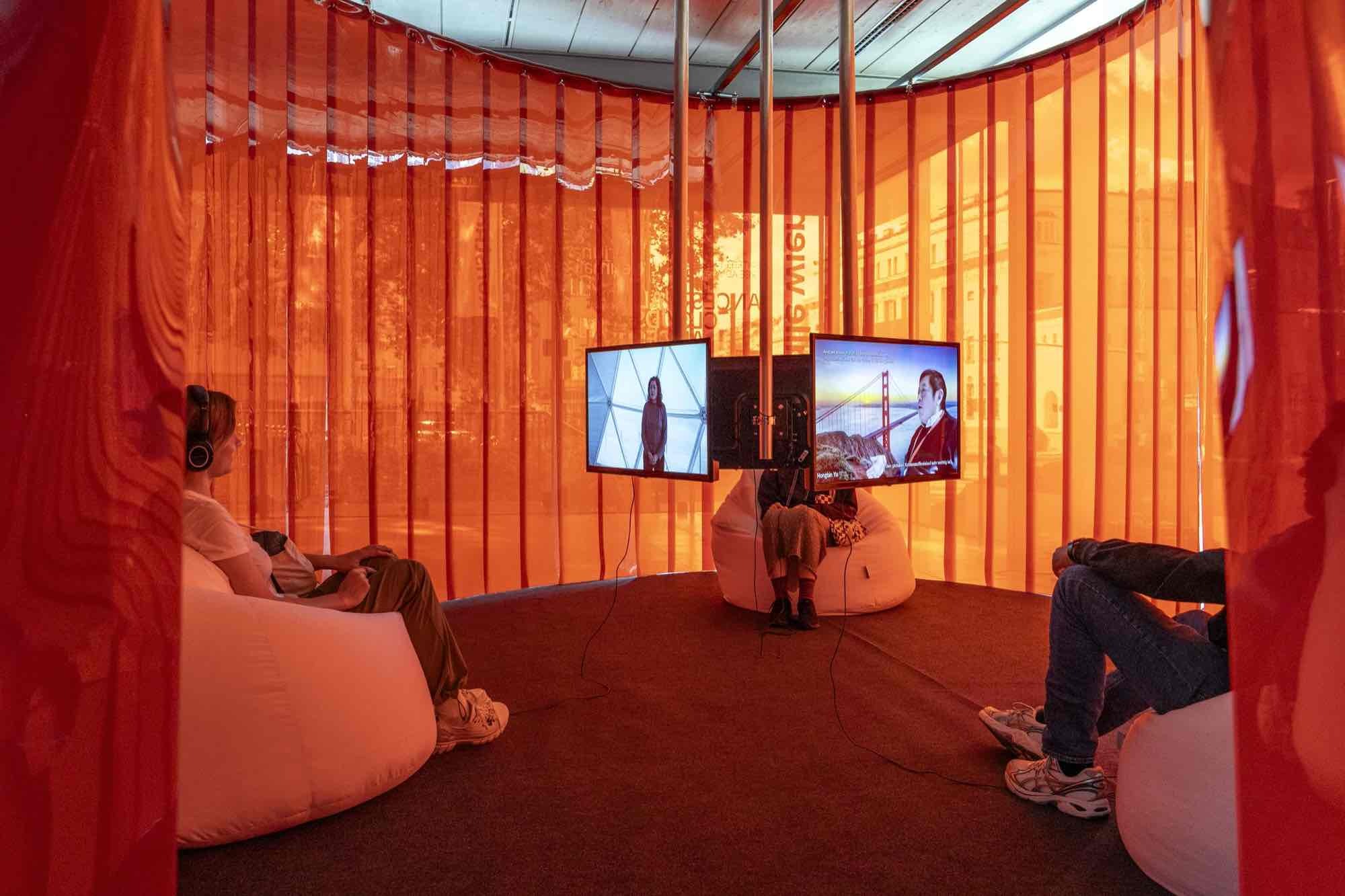
Installation view: Denise Ferreira da Silva & Arjuna Neuman. Ancestral Clouds Ancestral Claims, Kunsthalle Wien 2023, photo: Abiona Esther Ojo

Installation view: Denise Ferreira da Silva & Arjuna Neuman. Ancestral Clouds Ancestral Claims, Kunsthalle Wien 2023, photo: Abiona Esther Ojo
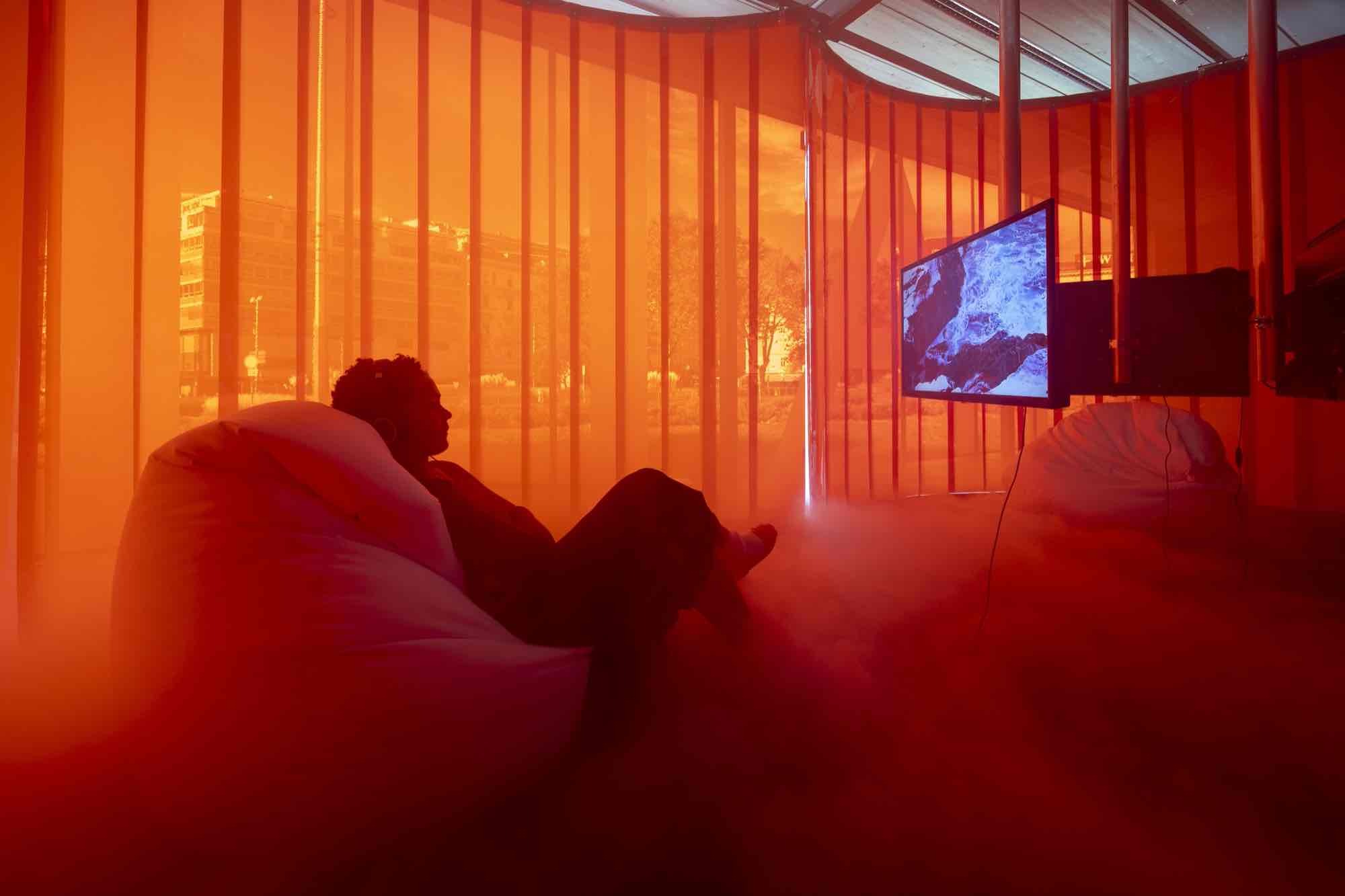
Installation view: Denise Ferreira da Silva & Arjuna Neuman. Ancestral Clouds Ancestral Claims, Kunsthalle Wien 2023, photo: Abiona Esther Ojo

Installation view: Denise Ferreira da Silva & Arjuna Neuman. Ancestral Clouds Ancestral Claims, Kunsthalle Wien 2023, photo: Abiona Esther Ojo
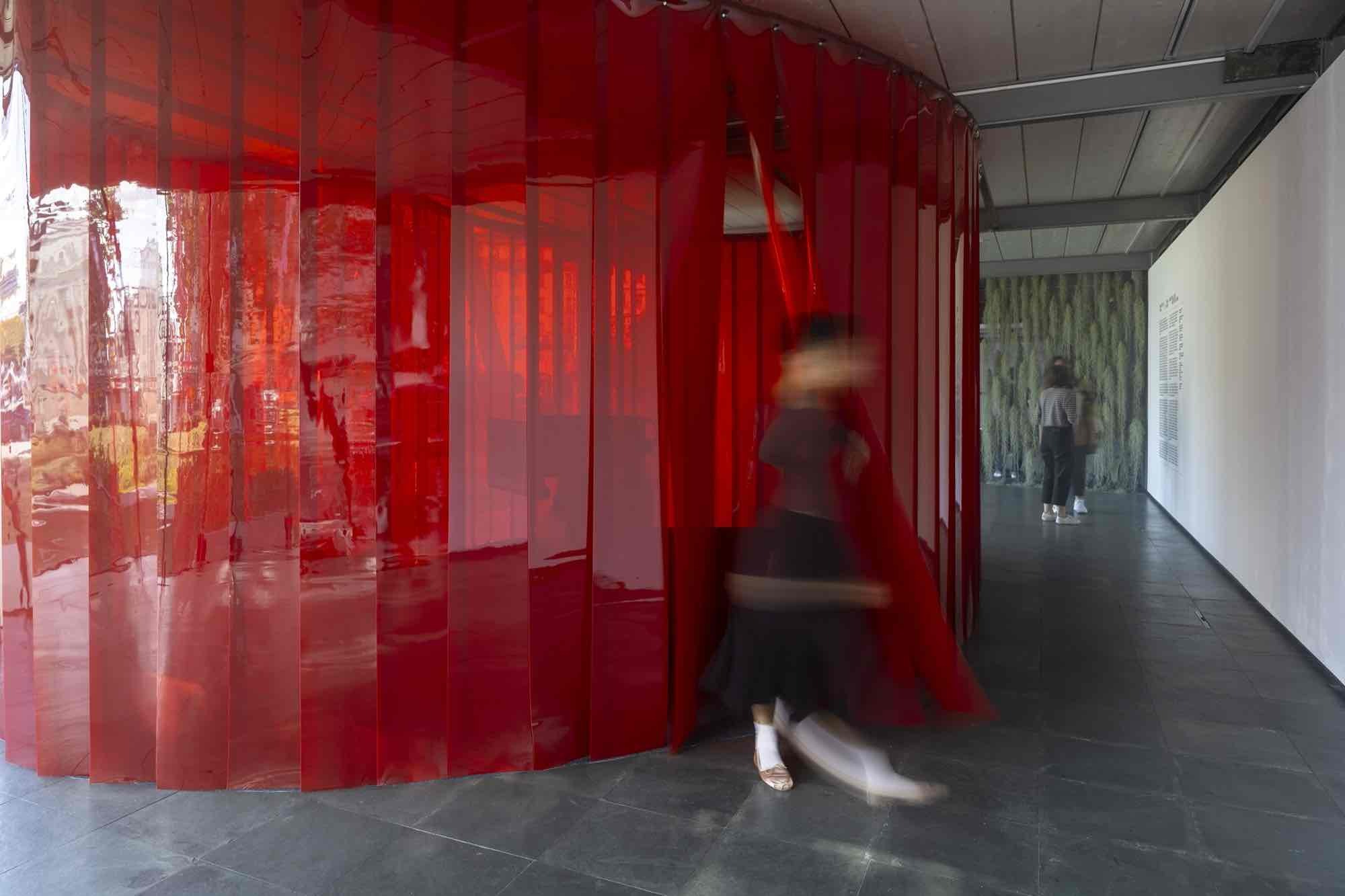
Installation view: Denise Ferreira da Silva & Arjuna Neuman. Ancestral Clouds Ancestral Claims, Kunsthalle Wien 2023, photo: Abiona Esther Ojo
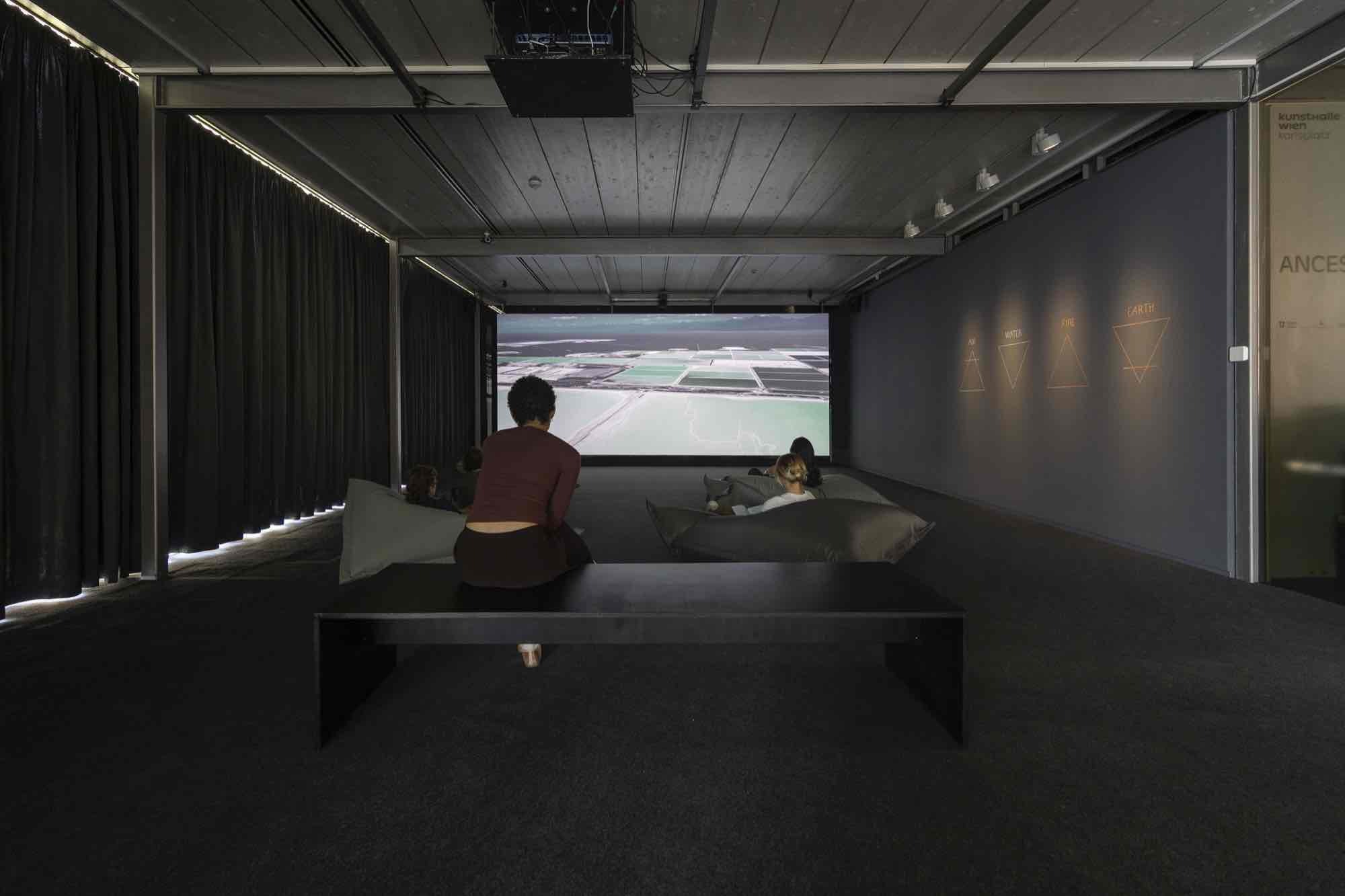
Installation view: Denise Ferreira da Silva & Arjuna Neuman. Ancestral Clouds Ancestral Claims, Kunsthalle Wien 2023, photo: Abiona Esther Ojo
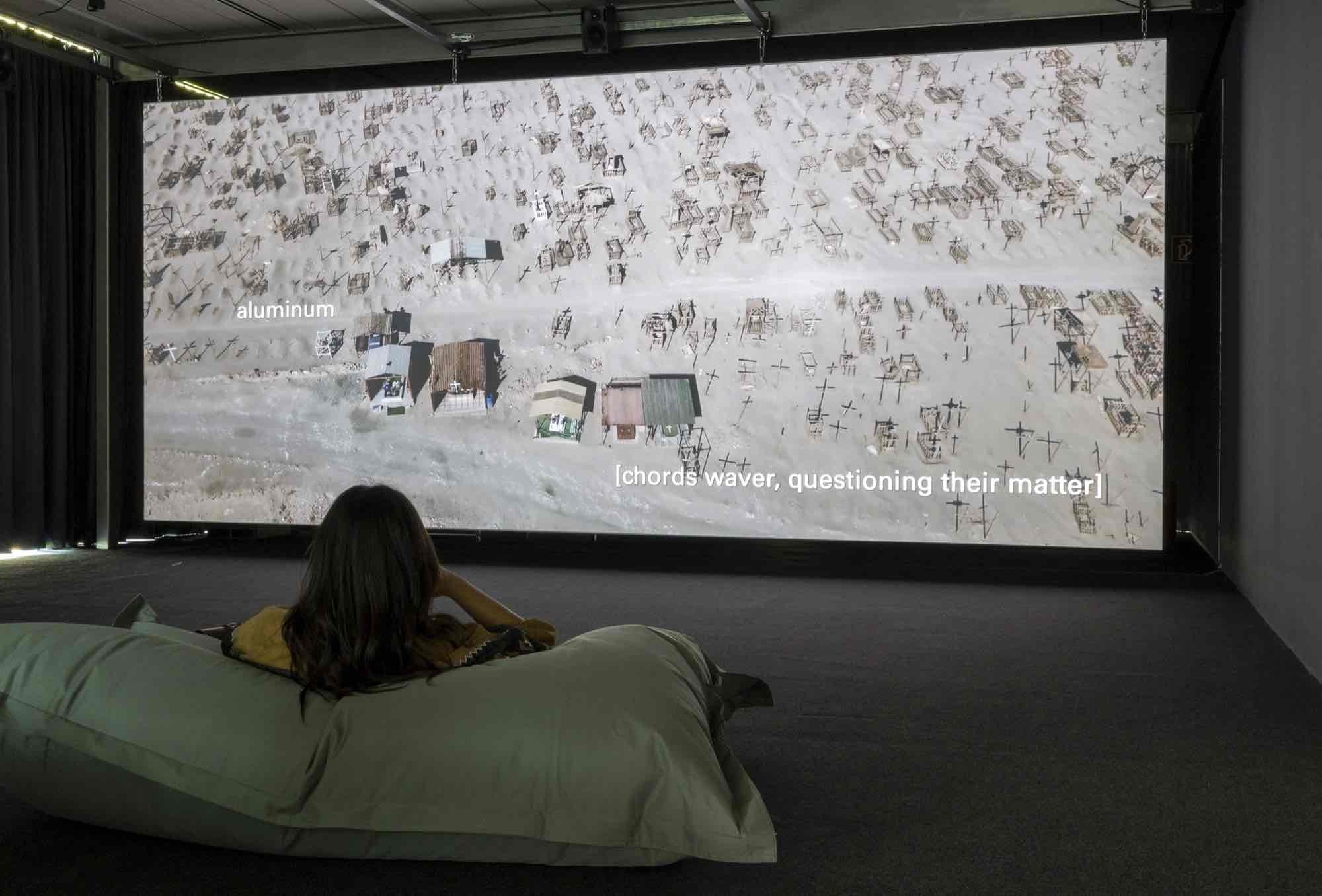
Installation view: Denise Ferreira da Silva & Arjuna Neuman. Ancestral Clouds Ancestral Claims, Kunsthalle Wien 2023, photo: Abiona Esther Ojo
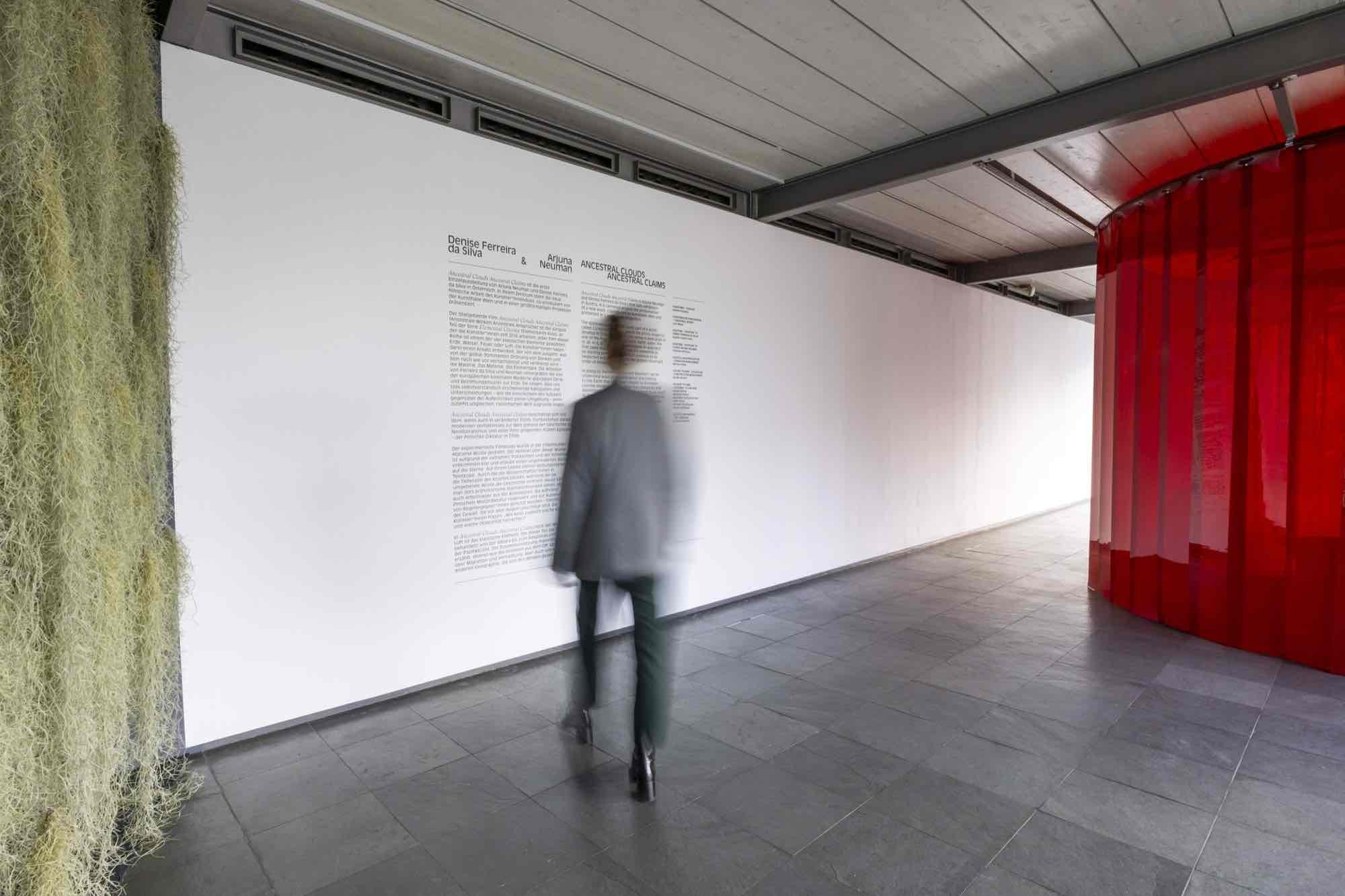
Installation view: Denise Ferreira da Silva & Arjuna Neuman. Ancestral Clouds Ancestral Claims, Kunsthalle Wien 2023, photo: Abiona Esther Ojo

Installation view: Denise Ferreira da Silva & Arjuna Neuman. Ancestral Clouds Ancestral Claims, Kunsthalle Wien 2023, photo: Abiona Esther Ojo
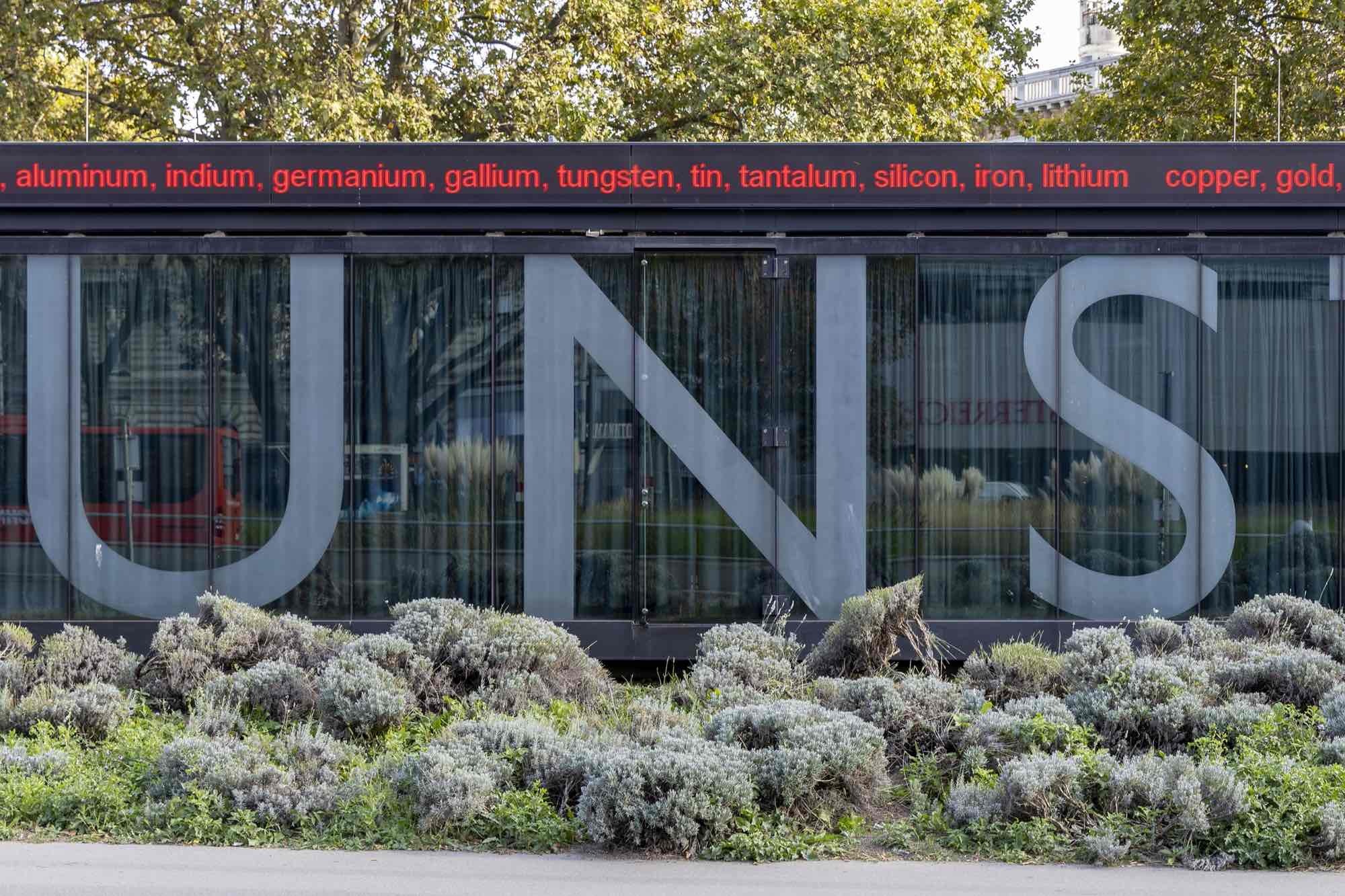
Installation view: Denise Ferreira da Silva & Arjuna Neuman. Ancestral Clouds Ancestral Claims, Kunsthalle Wien 2023, photo: Abiona Esther Ojo
Ancestral Clouds Ancestral Claims is Arjuna Neuman and Denise Ferreira da Silva’s first solo exhibition in Austria. It is centered around the presentation of a new work, coproduced by kunsthalle wien and presented as a large-scale projection.
The eponymous film Ancestral Clouds Ancestral Claims is the latest part of a series called Elemental Cinema, which the artists began to develop in 2016; each film in this series is dedicated to one of the four classical elements: earth, water, fire, or air. In it, the artists have developed an approach that takes matter, material, and the elemental as its starting point—aspects which have been purposefully neglected over hundreds of years by Western idealist thought.
Ferreira da Silva and Neuman’s work undermines patterns of thinking about and relating to the Earth that have been shaped by European colonial modernity. They show that categories and distinctions that seem self-evident to us—such as the interiority of the subject versus the exteriority of its surrounding—underlie a profoundly unequal, racist, and violent world. In her writing, Ferreira da Silva directs us to what is kept outside of the resulting global order of knowing and being. What is the seemingly irrelevant raw material, the bricks used to construct this order? How do the subjects of this order fashion themselves and their world? What are they indifferent to? What does this order unsee?
Ancestral Clouds Ancestral Claims turns the spotlight on the persistence, though in altered form, of this modern relation to the Earth in the history of neoliberalism and one of its defining early episodes: Chile under the Pinochet regime. (September 11, 2023, marked the fiftieth anniversary of the coup d’état that violently overthrew democratic socialist Salvador Allende, elected president of Chile.)
Partly documentary, partly anecdotal and experimental, Ancestral Clouds Ancestral Claims was shot in the Chilean Atacama Desert. In terms of visibility, there is a paradoxical relationship at work in this region. Because of the extreme aridity and elevation of the terrain, the skies above the desert are completely clear, allowing for an unobstructed view of the stars. Scattered across the dry land are powerful telescopes, such as the ALMA observatory, a science facility shown in the film. (Alma is Spanish for soul.) Through the telescopes and the clean air, scientists gaze into the cosmos’s deep time, while the surrounding desert freezes history: Today you can find prehistoric stone drawings there, but also labor camps from colonial times which were later reactivated during Pinochet’s dictatorship and used to exploit opponents of the regime—stories of violence that stay hidden in plain sight.
Patricio Guzmán’s Nostalgia de la Luz [Nostalgia for the Light] (2010), a documentary film to which Ancestral Clouds Ancestral Claims is related in its methodology, depicts groups of women who continue to sift through the desert’s sand in search of the human remains of their loved ones who were disappeared during the dictatorship. Untold numbers of murdered dissidents were left there without burial. The camera in Ancestral Clouds Ancestral Claims mechanically moves over fields of such unmarked mass graves. Neuman writes about Nostalgia for the Light: “The documentary seems to ask of Chile: how can there at once be such clarity and such obscurity?”
In this layered terrain—the Atacama Desert is also home to some of the world’s largest mines—, Ancestral Clouds Ancestral Claims sets out to trace the long, ongoing history of mining and its dependence on forced labor—from the extraction of resources such as saltpeter and copper to lithium in the present day. One sequence, for example, depicts the bright blue salares of the Atacama. These are vast salt flats used to extract lithium, a mineral that today powers rechargeable batteries, electronic devices such as computers, smartphones, robots, electric cars, and solar panels all around the planet. Lithium is at the center of a global energy transition from fossil fuels to so-called renewables—a transition that still operates under an extractivist logic.
Neuman and Ferreira da Silva’s work experiments with thinking and sensing simultaneously the various moments of material existence: the quantic, cosmic, organic/mechanic, historic/geologic. It functions like an “interscalar vehicle” (Gabrielle Hecht) that often departs from a particular site, but then moves through and weaves together various times and places to show the planetary scope and historical depth of pressing geopolitical issues.
Ancestral Clouds Ancestral Claims follows the classical element of air or wind, which allows the artists to experiment with said distribution and diffusion of matter across space and time. In the film, the wind travels from the Sahara to the Amazon and along the Pacific coast. Like the film’s off-screen voices, the composition and movement of material reality tells stories of migration and displacement, but also of another geography drawn by the winds.
Matter—next to historical, political, social, and aesthetic aspects, as well as discourses and sciences—becomes a pathway to reimagine our history and open up perspectives beyond a constitutively violent world. By undertaking this analysis, the artists move beyond critique and pursue new ways of knowing, being, seeing, smelling, tasting, touching.
Behind the large-scale film projection, a cluster of plants that are native to the Atacama Desert is situated: Tillandsia usneoides. Hung in a cascading curtain and titled What a Wall Could Be (2023), they separate the viewing room from a space called Cloud Chamber. Tillandsia grow without soil, nourishing themselves from the air alone. In this, they resemble some of the science facilities shown in the film that filter water from the air. After the end of the exhibition, the wall will dissolve: the individual plants can be adopted by visitors and taken away.
Curator: Andrea Popelka
The eponymous film Ancestral Clouds Ancestral Claims is the latest part of a series called Elemental Cinema, which the artists began to develop in 2016; each film in this series is dedicated to one of the four classical elements: earth, water, fire, or air. In it, the artists have developed an approach that takes matter, material, and the elemental as its starting point—aspects which have been purposefully neglected over hundreds of years by Western idealist thought.
Ferreira da Silva and Neuman’s work undermines patterns of thinking about and relating to the Earth that have been shaped by European colonial modernity. They show that categories and distinctions that seem self-evident to us—such as the interiority of the subject versus the exteriority of its surrounding—underlie a profoundly unequal, racist, and violent world. In her writing, Ferreira da Silva directs us to what is kept outside of the resulting global order of knowing and being. What is the seemingly irrelevant raw material, the bricks used to construct this order? How do the subjects of this order fashion themselves and their world? What are they indifferent to? What does this order unsee?
Ancestral Clouds Ancestral Claims turns the spotlight on the persistence, though in altered form, of this modern relation to the Earth in the history of neoliberalism and one of its defining early episodes: Chile under the Pinochet regime. (September 11, 2023, marked the fiftieth anniversary of the coup d’état that violently overthrew democratic socialist Salvador Allende, elected president of Chile.)
Partly documentary, partly anecdotal and experimental, Ancestral Clouds Ancestral Claims was shot in the Chilean Atacama Desert. In terms of visibility, there is a paradoxical relationship at work in this region. Because of the extreme aridity and elevation of the terrain, the skies above the desert are completely clear, allowing for an unobstructed view of the stars. Scattered across the dry land are powerful telescopes, such as the ALMA observatory, a science facility shown in the film. (Alma is Spanish for soul.) Through the telescopes and the clean air, scientists gaze into the cosmos’s deep time, while the surrounding desert freezes history: Today you can find prehistoric stone drawings there, but also labor camps from colonial times which were later reactivated during Pinochet’s dictatorship and used to exploit opponents of the regime—stories of violence that stay hidden in plain sight.
Patricio Guzmán’s Nostalgia de la Luz [Nostalgia for the Light] (2010), a documentary film to which Ancestral Clouds Ancestral Claims is related in its methodology, depicts groups of women who continue to sift through the desert’s sand in search of the human remains of their loved ones who were disappeared during the dictatorship. Untold numbers of murdered dissidents were left there without burial. The camera in Ancestral Clouds Ancestral Claims mechanically moves over fields of such unmarked mass graves. Neuman writes about Nostalgia for the Light: “The documentary seems to ask of Chile: how can there at once be such clarity and such obscurity?”
In this layered terrain—the Atacama Desert is also home to some of the world’s largest mines—, Ancestral Clouds Ancestral Claims sets out to trace the long, ongoing history of mining and its dependence on forced labor—from the extraction of resources such as saltpeter and copper to lithium in the present day. One sequence, for example, depicts the bright blue salares of the Atacama. These are vast salt flats used to extract lithium, a mineral that today powers rechargeable batteries, electronic devices such as computers, smartphones, robots, electric cars, and solar panels all around the planet. Lithium is at the center of a global energy transition from fossil fuels to so-called renewables—a transition that still operates under an extractivist logic.
Neuman and Ferreira da Silva’s work experiments with thinking and sensing simultaneously the various moments of material existence: the quantic, cosmic, organic/mechanic, historic/geologic. It functions like an “interscalar vehicle” (Gabrielle Hecht) that often departs from a particular site, but then moves through and weaves together various times and places to show the planetary scope and historical depth of pressing geopolitical issues.
Ancestral Clouds Ancestral Claims follows the classical element of air or wind, which allows the artists to experiment with said distribution and diffusion of matter across space and time. In the film, the wind travels from the Sahara to the Amazon and along the Pacific coast. Like the film’s off-screen voices, the composition and movement of material reality tells stories of migration and displacement, but also of another geography drawn by the winds.
Matter—next to historical, political, social, and aesthetic aspects, as well as discourses and sciences—becomes a pathway to reimagine our history and open up perspectives beyond a constitutively violent world. By undertaking this analysis, the artists move beyond critique and pursue new ways of knowing, being, seeing, smelling, tasting, touching.
Behind the large-scale film projection, a cluster of plants that are native to the Atacama Desert is situated: Tillandsia usneoides. Hung in a cascading curtain and titled What a Wall Could Be (2023), they separate the viewing room from a space called Cloud Chamber. Tillandsia grow without soil, nourishing themselves from the air alone. In this, they resemble some of the science facilities shown in the film that filter water from the air. After the end of the exhibition, the wall will dissolve: the individual plants can be adopted by visitors and taken away.
Curator: Andrea Popelka
